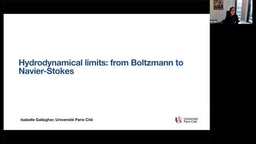OK – I know this is going to sound strange, but I really love looking at electron density… Most structural papers have a few figure panels showing some electron density (usually the active site residues), but atomic resolution structures are rare and it’s just so satisfying to see little globes of density around each atom (rather than a big blob that could represent one of several rotomers…)
If you love electron density too, there’s a recent paper from Nature Chemical Biology that might interest you: Lyubimov et al. “obtained five sets of X-ray diffraction data at atomic resolution (0.92–0.99 [Angstroms]) over a broad pH range (4.5, 5.2, 5.8, 7.3 and 9.0).” And Figures 1, 2, and 4 are beautiful… (If you don’t currently subscribe to that journal, the paper’s graphical abstract has a taste of what you’re missing…)
This isn’t the first atomic resolution X-ray crystal structure of a protein – there’s also a 1.0 Angstrom structure of cutinase from Longhi et al., a 0.78 Angstrom structure of subtilisin from Kuhn et al., a 0.95 Angstrom structure of a pancreatic elastase/N-acetyl-Asn-Pro-Ile-CO2H complex from Katona et al., a a series of atomic resolution structures of RNase A from Berisio et al., and a 0.95 Angstrom structure of cholesterol oxidase from Lario et al.
Lyubimov et al. remind us that "[i]n 1936, Mirsky and Pauling wrote, ‘The importance of the hydrogen bond in protein structure can hardly be overemphasized’" – I’m sure that Mirsky and Pauling would be really interested to read the aforementioned papers, as we are now able to examine the role of hydrogen atoms in enzymatic catalysis for fairly large proteins (cholesterol oxidase is 56 kDa, for example).
Hopefully this field will continue to grow and we’ll see more atomic resolution structures in the RCSB Protein DataBank – I don’t know about you, but I’d love to see a 0.9 Angstrom structure of the ribozyme in action…
Joshua
Joshua Finkelstein (Associate Editor, Nature)





Please sign in or register for FREE
If you are a registered user on Research Communities by Springer Nature, please sign in